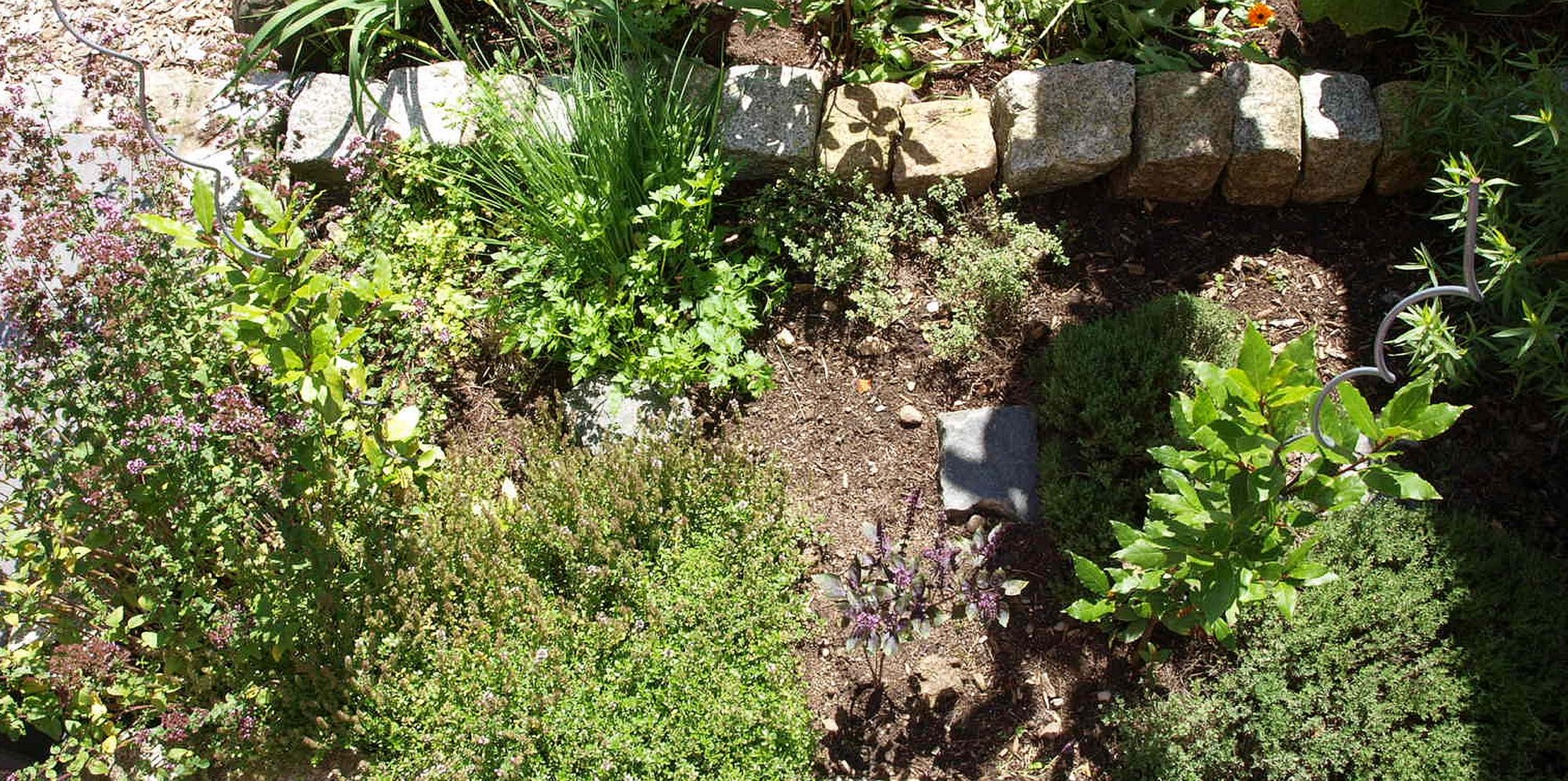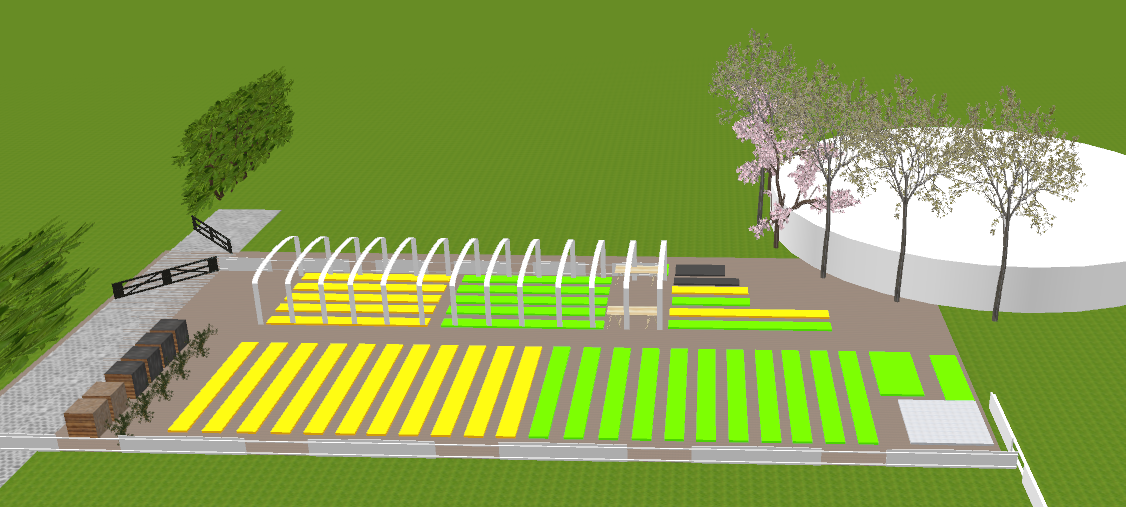We don’t sell produce from our garden. Nevertheless, I call it a market garden. But shouldn’t I rather call it an allotment or veg patch?
I reckon it qualifies as a market garden because I run it like a professional market garden and a lot of reading about market gardens went into the planning.
Planning and Layout
Almost all beds have exactly the same dimensions (8m x 0.8m). Fleece, insect netting and the metal arcs holding them can be used on all beds in the same way.
Because of the same dimensions, I can use one spreadsheet with figures for all kinds of crops and I don’t have to break it down to the actual area of one particular bed. The same number of beetroot can be planted on all beds and the yield should be the same, too.

The layout tries to optimize the ratio between paths and beds. Paths are wide enough to secure good accessibility, but they are as narrow as possible.
Beds are as wide as possible. The width was determined by the shortest member in the garden crew. She had to be able to step over a bed and work it.
The layout aims at reducing distances to work the land as far as possible.
All planing was done in scale with a 3d planning tool.

Processes
Videos and books by Charles Dowding and a day course at Homeacres, books and YouTube videos by Eliot Coleman, Ben Hartman, Curtis Stone, Jean-Martin Fortier and many others are the base for the processes to run the garden. You find a list of resources below.
For example:
- The choice of crops is (to some extend) made by looking at needed effort and market value (i.e. saved money) as described by most authors above. In a spreadsheet there is an index for each crop based on the calculations by e.g. Stone.

- I try to optimize processes to reduce muda i.e. waste of time or resources. In other words, work I perform should add value to my products. If it is just shifting things around, it is not adding value. This kind of work should be reduced.
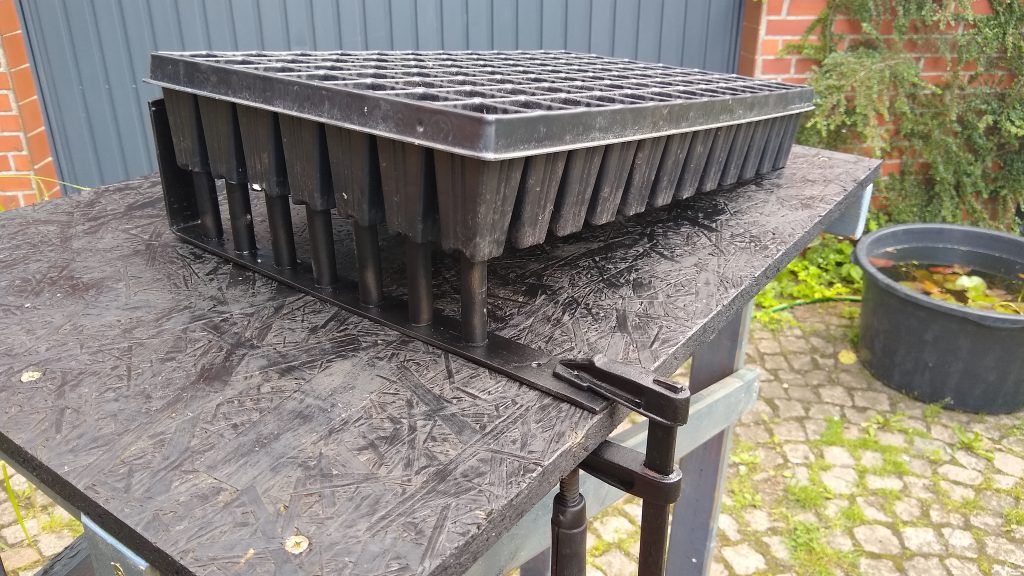
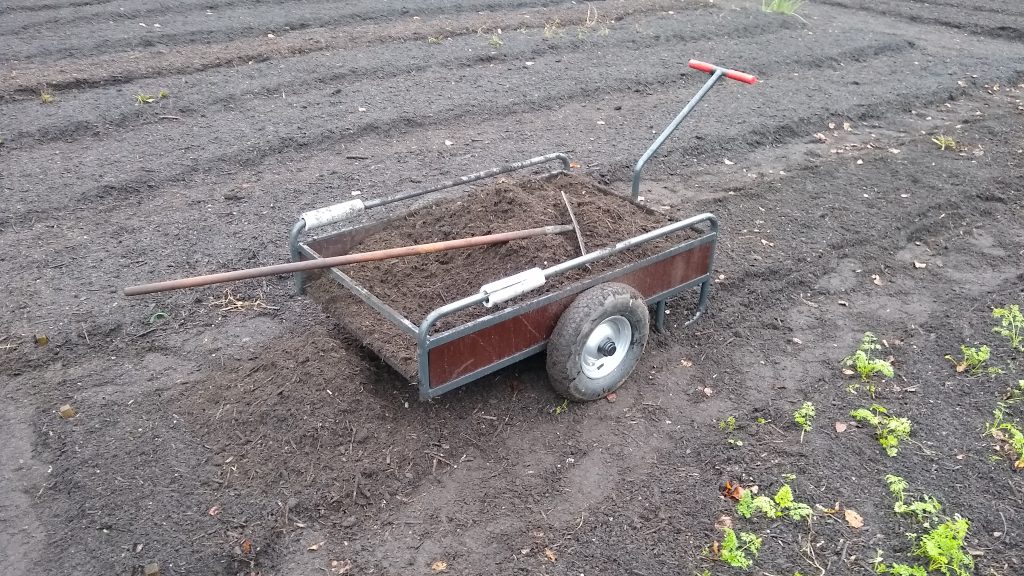


- Since the market garden is 5.5 km away from home, I grow crops which don’t need my daily attention. The crops with high demand for TLC are grown in our garden at home.
- Most crops are sown and tended in module trays at home and planted out in the market garden when ready. This allows for more than one or two crops per year and bed.

- Following Charles Dowding’s advice, many crops are sown in groups/modules of 3-6 (see above). This helps to reach the aim of high density planting described by all authors above.
- As Eliot Coleman describes, I try to push the limits of what is possible in my climate – but I check that it is still economically viable.
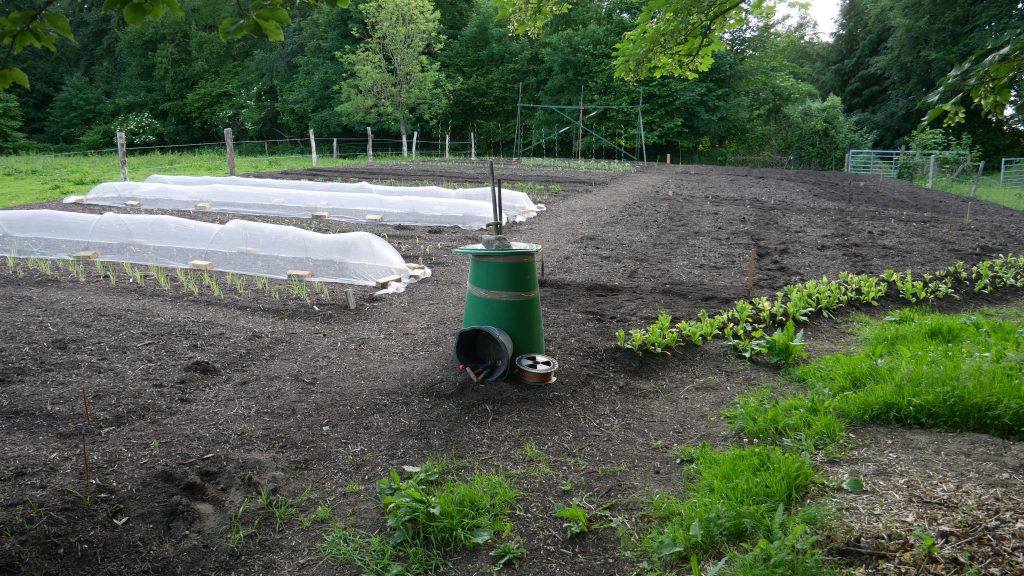
Conclusion
What makes a market garden? To me, it is more than selling produce. It is also the idea of how to run such a place. The selling is just one tiny aspect. So that’s why I regard our garden as a market garden. The more so, as it serves two families for their daily „shopping“ of a wide variety of veg.
Editorial Note
I wrote most of the article more than a year ago. So all photos show the market at an early stage. It has matured since then, but the processes haven’t changed that much.
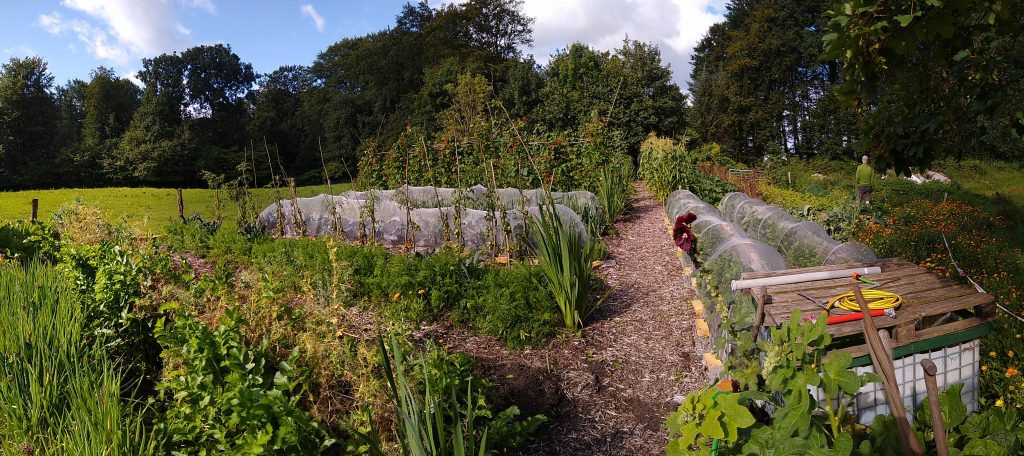
Literature and Sources
There is roughly 1 1/2 m of gardening literature in my library + lots of books on the e-book reader. Most relevant for the topic market garden would be the following books and other resources. Resources marked in bold are the ones, most relevant to me concerning the market garden.
Coleman, Eliot (2014): Handbuch Wintergärtnerei
Dowding, Charles (2011): Winter Vegetables
Dowding, Charles (2012): Gemüsegärtnern wie die Profis
Dowding, Charles (2014): Veg Journal
Dowding, Charles (2017): Gelassen Gärtnern
Fortier, Jean-Martin (2017): Bio-Gemüse erfolgreich direkt vermarkten
Hartman, Ben (2015): The Lean Farm
Markham, Brett L. (2011): Mini-Farming
Seymour, John (2010): Das neue Buch vom Leben auf dem Lande
Stone, Curtis (2016): The Urban Farmer
Stone actually ran his farm, that brought him Internet fame, just for a few years. Nevertheless, his business approach is interesting. I wouldn’t buy his book today though, as he drifted into Christian conspiracy theories, living off-grid and waiting for the apocalypse to come.
Strawbridge, Dick&James (2011): Das große Buch der Selbstversorgung
